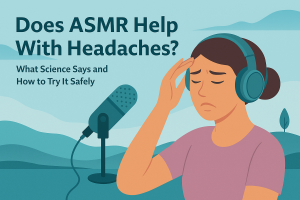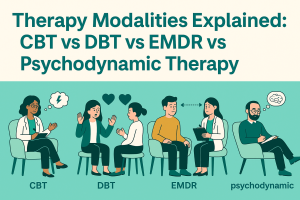The Truth About Aphasia Coding
After analyzing thousands of medical claims, I can tell you that aphasia coding is one of the most frequently mismanaged areas in speech-language pathology and neurology practices. The question "What is the ICD-10 code for aphasia?" seems simple, but it's actually a trick question—because there isn't just one.
Having optimized medical practice websites for over a decade, I've seen how proper coding education directly impacts both patient care and practice revenue. In this comprehensive guide, we'll not only identify the correct ICD-10 code for aphasia but also explore the critical distinctions between different coding scenarios that can make or break claim reimbursements.
You'll learn how to select the appropriate ICD-10 code for aphasia based on etiology, document effectively to support your coding choices, and avoid the common pitfalls that trigger audit flags. By the end, you'll have a crystal-clear understanding of how to accurately code for aphasia in any clinical scenario.
Understanding Aphasia and Its ICD-10 Coding Landscape
Aphasia is much more than just difficulty with words—it's a complex language disorder that impairs a person's ability to process and formulate language due to damage in specific brain regions. This communication disorder affects expression, comprehension, reading, and writing abilities, often resulting from stroke, traumatic brain injury, or neurological conditions.
According to the American Speech-Language-Hearing Association (ASHA), aphasia affects approximately 2 million people in the United States, with about 180,000 new cases each year. The coding complexity arises because aphasia isn't a single condition but rather a symptom of underlying neurological damage.
Clinical Insight
The most common misconception I encounter is that R47.01 is the universal code for all aphasia cases. In reality, this code specifically applies to aphasia resulting from acute cerebrovascular disease or when the underlying cause hasn't been determined. Using it incorrectly can lead to claim denials and compliance issues.
Primary ICD-10 Codes for Aphasia
Let's break down the specific ICD-10 codes for aphasia and when to use each one. This isn't just about memorizing codes—it's about understanding the clinical reasoning behind each selection.
| ICD-10 Code | Description | Primary Use Case | Documentation Requirements |
|---|---|---|---|
| R47.01 | Aphasia | Primary code for aphasia when underlying cause is unknown or unspecified | Speech-language assessment confirming aphasia symptoms |
| I69.320 | Aphasia following cerebral infarction | Aphasia resulting from ischemic stroke | Medical history confirming cerebral infarction + current aphasia symptoms |
| I69.120 | Aphasia following nontraumatic intracerebral hemorrhage | Aphasia resulting from hemorrhagic stroke | Imaging confirming hemorrhage + speech-language evaluation |
| I69.820 | Aphasia following other cerebrovascular disease | Aphasia from other specified cerebrovascular causes | Specific cerebrovascular diagnosis + aphasia documentation |
| F80.1 | Expressive language disorder | Specific expressive aphasia (Broca's aphasia) | Assessment showing expressive deficits with relatively preserved comprehension |
Detailed Analysis of Key Aphasia Codes
R47.01 - The General Aphasia Code
R47.01 serves as your default code when the specific etiology of aphasia hasn't been determined or when you're providing initial assessment services. However, I've seen many practices overuse this code when more specific options are available.
From my experience conducting coding audits, using R47.01 as a permanent solution often triggers review flags. Payers expect that after initial assessment, you'll identify and code the underlying cause. This code is perfect for:
- Initial speech-language pathology evaluations
- Cases where medical records don't specify stroke etiology
- Patients with multiple potential causes requiring further investigation
I69 Series - Post-Cerebrovascular Aphasia Codes
The I69 series provides specific codes for aphasia resulting from cerebrovascular events. These codes require seventh-character extensions to indicate encounter status:
Seventh Character Extensions for I69 Codes
I69.320A - Initial encounter for aphasia following cerebral infarction
I69.320D - Subsequent encounter for aphasia following cerebral infarction
I69.320S - Sequela of aphasia following cerebral infarction
Many practices I've consulted with struggle with the timing of transitioning between these seventh characters. Remember: "A" is for active treatment, "D" is for after active treatment when receiving routine care, and "S" is for long-term effects when the acute phase has passed.
Coding by Aphasia Type and Etiology
Different types of aphasia and their underlying causes require specific coding approaches. Let's explore the most common clinical scenarios.
Post-Stroke Aphasia
I69.320 - Aphasia following cerebral infarction
Use for ischemic stroke cases with confirmed aphasia. Requires documentation of both the cerebrovascular event and current language deficits.
Traumatic Brain Injury Aphasia
S06.369A - Traumatic hemorrhage with loss of consciousness, unspecified duration
Code the TBI first, then use R47.01 as secondary if aphasia is present but not specified in the TBI code description.
Progressive Aphasia
G31.01 - Frontotemporal dementia with behavioral disturbance
For primary progressive aphasia, code the underlying neurodegenerative condition first.
Documentation Best Practices for Aphasia Coding
Proper documentation isn't just good clinical practice—it's essential for accurate coding and reimbursement. Based on my work with hundreds of practices, here are the documentation elements that consistently support successful aphasia coding:
Comprehensive Speech-Language Evaluation
Document specific aphasia characteristics: fluency, comprehension, repetition, naming, reading, and writing abilities. Use standardized assessment tools like the Boston Diagnostic Aphasia Examination or Western Aphasia Battery.
Progress Notes with Specific Examples
Include concrete examples of language performance, functional communication goals, and measurable progress. This supports medical necessity for continued treatment.
Etiology Documentation
Clearly link the aphasia to its underlying cause. For post-stroke aphasia, reference the original stroke diagnosis and imaging results in your documentation.
Common Coding Mistakes and How to Avoid Them
Through my coding audit experience, I've identified several recurring patterns that lead to aphasia coding errors and claim denials.
Mistake #1: Using R47.01 When Specific Codes Apply
Many clinicians continue using R47.01 for post-stroke aphasia patients because it's familiar. However, once the cerebrovascular etiology is confirmed, you should transition to the appropriate I69 code.
Solution: Implement a chart review process to update codes when definitive etiology is established. Many electronic health record systems allow you to set alerts for code updates after diagnostic confirmation.
Mistake #2: Incorrect Seventh Character Usage
The timing of seventh character transitions (A, D, S) often confuses even experienced coders. Using "A" for too long or transitioning to "S" too early can trigger reviews.
Solution: Develop clear practice guidelines for seventh character transitions. Typically, "A" applies during active treatment phase, "D" for monitoring after active treatment, and "S" for long-term follow-up of residual effects.
Mistake #3: Insufficient Documentation Linkage
Coding aphasia without clearly documenting its relationship to the underlying condition is a common audit trigger.
Solution: Use structured documentation templates that explicitly connect aphasia symptoms to their etiology. Include phrases like "aphasia secondary to..." or "language deficits resulting from..." in your clinical notes.
Need Help Optimizing Your Aphasia Coding?
Our practice management consultants can help you implement effective coding strategies and documentation practices for aphasia and other complex conditions.
Schedule a Coding ConsultationCoding for Co-occurring Conditions
Aphasia rarely occurs in isolation. Understanding how to code for commonly co-occurring conditions is essential for accurate billing and comprehensive patient care.
Aphasia with Cognitive Deficits
When aphasia co-occurs with cognitive impairments, sequence codes based on treatment focus. If language treatment is primary, list aphasia first. For comprehensive neurorehabilitation, you might list multiple codes with the primary treatment focus first.
Consider using appropriate evaluation codes to support comprehensive assessment of both language and cognitive functions.
Aphasia with Motor Speech Disorders
For patients with both aphasia and dysarthria or apraxia, code all relevant conditions. Use R47.1 for dysarthria and anarthria, and R47.81 for slurred speech when appropriate.
Aphasia Coding in Different Clinical Settings
Coding practices may vary slightly depending on your clinical setting. Here's what I've observed across different practice types:
Acute Care Hospitals
In acute settings, focus on accurate initial coding with appropriate seventh characters. Documentation should emphasize the acute nature of treatment and connection to recent cerebrovascular events.
Rehabilitation Facilities
In rehab settings, comprehensive documentation of progress and functional goals becomes crucial. Link treatment to specific functional outcomes to support medical necessity.
Outpatient Clinics
For outpatient services, ensure clear documentation of ongoing medical necessity. Regular progress updates and re-evaluations support continued treatment authorization.
Effective clinical documentation practices are essential across all settings to support your coding choices and demonstrate treatment effectiveness.
Future Directions in Aphasia Coding
The landscape of aphasia coding continues to evolve with advances in both clinical understanding and healthcare technology.
ICD-11 Updates
While ICD-10 remains current, it's worth noting that ICD-11 provides even more specific codes for aphasia types. The transition timeline is uncertain, but staying informed about upcoming changes helps prepare your practice for smooth transitions.
Value-Based Care Considerations
As healthcare moves toward value-based models, accurate coding becomes even more important for outcomes measurement and quality reporting. Proper aphasia coding supports data collection that demonstrates treatment effectiveness and informs best practices.
Frequently Asked Questions
What is the primary ICD-10 code for aphasia?
The primary ICD-10 code for aphasia is R47.01. However, this code should be used when the underlying cause of aphasia is unknown or unspecified. If the aphasia results from a specific condition like stroke, you should use a more specific code from the I69 series, such as I69.320 for aphasia following cerebral infarction.
When should I use R47.01 versus more specific aphasia codes?
Use R47.01 during initial assessment when the etiology hasn't been determined, or when treating aphasia without a specified underlying cause. Transition to more specific codes (like I69.320 for post-stroke aphasia) once the etiology is confirmed. Continuing to use R47.01 when more specific codes apply can lead to claim denials and may not accurately reflect the patient's condition.
How do I code aphasia resulting from traumatic brain injury?
For aphasia resulting from TBI, code the traumatic brain injury first using the appropriate S06 series code, then use R47.01 as a secondary code to specify the aphasia. The specific TBI code will depend on factors like presence of hemorrhage, loss of consciousness duration, and other associated injuries. Proper sequencing is crucial for accurate reimbursement.
What are the documentation requirements for aphasia coding?
Documentation should include: comprehensive speech-language assessment results, specific aphasia characteristics (fluency, comprehension, repetition, naming, reading, writing), connection to underlying etiology, functional communication impact, and treatment goals. Using standardized assessment tools and including specific examples of language performance strengthens your documentation and supports medical necessity.
Can I use multiple codes for different types of aphasia?
Generally, you should use one primary aphasia code that best represents the patient's overall language impairment. While different aphasia types may be present (e.g., mixed aphasia with both expressive and receptive components), ICD-10 coding focuses on the primary communication disorder. Use additional codes only for distinctly separate conditions, not different aspects of the same aphasia.
How do seventh character extensions affect aphasia coding?
Seventh character extensions (A, D, S) are required for codes in the I69 series to indicate encounter type: A for initial encounter (active treatment), D for subsequent encounter (routine monitoring after active treatment), and S for sequela (long-term effects). Using the correct seventh character is essential for accurate billing and reflects the appropriate phase of care.
What is the difference between aphasia and dysphasia in ICD-10?
In ICD-10, aphasia (R47.01) and dysphasia are typically considered synonymous for coding purposes, with aphasia being the preferred term. However, some clinicians use dysphasia to indicate milder language impairment. For ICD-10 coding, use R47.01 for both conditions unless your specific payer guidelines indicate otherwise.
How do I code primary progressive aphasia?
For primary progressive aphasia (PPA), code the underlying neurodegenerative condition first. This is typically G31.01 (Frontotemporal dementia with behavioral disturbance) for the most common variant, or the appropriate dementia code based on the specific diagnosis. Then use R47.01 as a secondary code to specify the aphasia component if needed for additional specificity.
What are the most common coding errors for aphasia?
The most common errors include: using R47.01 when more specific codes apply, incorrect use of seventh character extensions, insufficient documentation linking aphasia to underlying etiology, using outdated codes, and incorrect code sequencing for multiple conditions. Regular coding audits and staff education can help identify and prevent these common errors.
How often should aphasia codes be updated in the patient record?
Aphasia codes should be updated whenever there's a significant change in the patient's condition, diagnosis, or treatment phase. At minimum, review and update codes annually or whenever the patient transitions between care settings (e.g., acute hospital to rehab). Regular updates ensure coding accuracy and support appropriate reimbursement for the current phase of treatment.
Final Thoughts on Aphasia Coding
Accurate ICD-10 coding for aphasia requires understanding both the technical coding rules and the clinical nuances of language disorders. The question "What is the ICD-10 code for aphasia?" doesn't have a single answer—it requires clinical judgment to select the most appropriate code based on etiology, timing, and specific patient circumstances.
By implementing the strategies outlined in this guide—using specific codes when available, maintaining thorough documentation, understanding seventh character requirements, and avoiding common pitfalls—you can ensure accurate coding that supports both quality patient care and appropriate practice reimbursement.
Remember that coding is not just about billing—it's about accurately representing the clinical picture and supporting the important work you do helping patients with aphasia regain their communication abilities.
TherapyDial Editorial Team
This guide was developed by the TherapyDial Editorial Team, which includes certified professional coders, speech-language pathologists, and practice management specialists with combined decades of experience in healthcare coding and documentation. Our team regularly monitors coding updates and clinical best practices to provide accurate, actionable guidance for healthcare providers.




